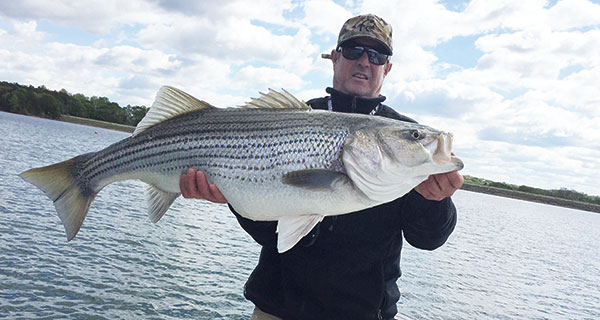Water temperature – 82° and water level – full pool.
July fishing is going to be hot. The hybrids and stripers are grouping up and congregating in the lower Lake. This is the year of big numbers. Lots of bigger fish died last fall. With all the rain we had last summer and fall, the oxygen got low and most big fish were unable to survive. The Georgia and South Carolina DNR have stocked lots of hybrids and stripers. We’re catching some 8 to 10 pound stripers and lots of 3 to 5 pound hybrids, but there are still some big fish in the Lake. A friend of mine caught a 30 pounder last week. If I get on a school of small fish, I’ll move and look for bigger fish. With a lifespan of only 4 to 6 years, the 3 to 5 pound hybrids are growing fast. In July, the hybrids and stripers go deeper, so I look for them in water at least 30 to 40 feet deep. A good sonar unit is a big part of fishing in the summer. I am hunting till I find the school, then I send a lively Herring down to them on a Carolina rig. A swim bait on a 1 ounce jig head reeled through them works, and a big teardrop Spoon will also work.
Bass fishing will get better as most bass boats quit fishing. The bass get lots of pressure in the spring with the bass close to the bank. As the water warms, the bass move off the bank to deeper cover. This is usually brush piles, put out by anglers, in areas 15 to 30 feet deep, around points and humps. Most good locations already have brush piles and they are yours to fish if you can locate them with your sonar. The spotted bass are taking over so we catch mostly spots now. They are more aggressive than the largemouth and are easier to catch. They are also prolific spawners and out-compete the largemouth. They are here to stay. A 2-pound spot will fight harder than a 6 pound largemouth. They also taste like a crappie without the fishy taste of a largemouth. As the water gets warmer, they group up like stripers. If you find them, you can catch a bunch.
